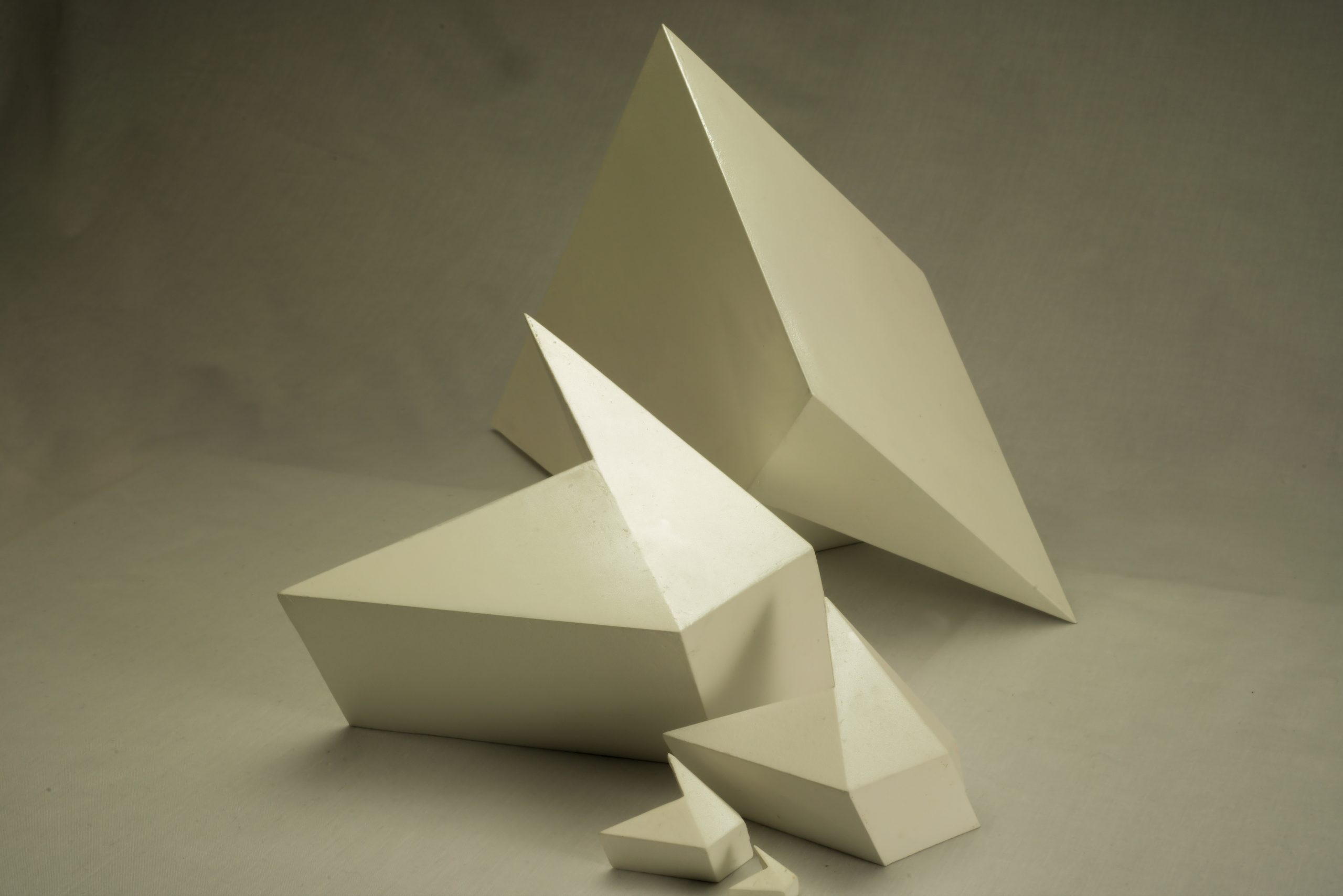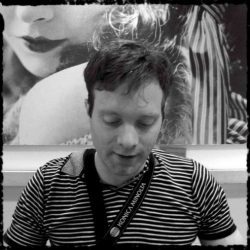
Shape to escape, escape to shape
Earlier these types of geometrically shapes only existed as drawings on my computer.
I love to create and to render by the means of computer grafics since 2008, much later they became sculptures based on 3D printing prototypes, these were later used as casting molds for polymer plaster. This last step into materialization is not easy, there is always, and there will always be, this huge gap of materialzation so hard to cross.
I really started playing around with geometry when there was computer aided design to hand. In a more joyfull and creative way then ever it has been with paper and pencil. There was now this computerized 3D space – a carthesian playground that can be saved, saved as…, copied, layered, deleted, altered, styled, re-styled, undone, redone. Like a classical painter that overpainted or reframes its earlier work. Admittingly, in my student years I wasn’t that found of descriptive geometry classes, all manipulations in space were reduced to two projection planes on paper, all operations were complicated, long lasting, and rather a painfull gymnastic imposed by teachers than a joy.
In the unreal World of Pure Concepts things can be geometrically 100% perfect. Even geometrical drawings themselves are more dematerialized then ever since the dawn of computer graphics in the 1990s. Through computized graphics the perfection is not a fonction of the sharpness of the tools (a pencil or pen and a ruler) in the hands of engineers or architects like in the past.
It is now a mathematically -and- geometrically perfect world.
Nevertheless one may push this idea further: even today, the line depicted on a computer screen is a representation of the concept of a line that resides electronically in the computer processor (like the shadows casted on the wall in Plato’s cave). I see a line on the screen, it has already a thickness that, I know, shouldn’t be there, but only this minimal thickness is what makes it visible to our eyes. In the computer processor this line is really represented in its real essence: an mathematical expression, in itself unvisible, but still a Platonian concept, Idea of a line, that I drew with my bare hands down here in this sensible world.
This perfection – similar to Plato’s Ideas – makes that these abstract creations are also unreachable, or not representable as such, but only as a phenomenological, willingly simplified, entity in the material world. Things of our world, can only be depicted, they will have a thickness, a filling, an uneven edge or face, a weight, a center of gravity, a certain material resistance, etc.

The virtuality, the unreachable of the perfect geometrical shape, therefore has always its corellated imperfect material reality. One is not superior or better than the other, but each one needs its counterpart.
Phenomenology steps onto stage: the sensible shape has the ability to refer to its perfect conceptual idea in every spectator’s mind. And endless cycle is created: from abstract to figurative. And vice versa.

In the computer world, a user cannot just grap a line on the screen with its hand, like you would just grap a cup of tee in real. You have to set a logical flag – a “TRUE” – into the abstract world (in other words, to the computer program) that you wish to grasp this line, and hence, to give a logical “TRUE” instead of just doing the material manipulation in the hardware world. Every mouse click is nothing more than a distinction between “0” and “1” – but it has to be done, it is the only way to reach into the other world. But it is the starting point.
CAD users are caught pulling carelessly one line to the end of another on their screens, like they would do on paper, only to later realize, magnifiying by 400%, that these two lines dont really met like they should. It “looked like” if they were joining, but there were not “logically stated” as joining. The human constantly forgets about this severe and unvergiving, absolute polarized duality – of logical “TRUE” or “FALSE” that made all its way up from pre-socratian dialectics to the philosophy of our days, and now the computer coding. Even when “fuzziness” and irrational, the subconscious, the subjective, was introduced by modern thinkers since the age romaticism, it is still more phenomenological than technological.
Nevertheless, when overcoming this barrier computer aided design can again be inventive, creative and playful. If users overcomes these purely logical semantics of the values “0” and “1” that remain always the atomic elements when it finds a new esthetic, a new intention. Even when in the future A.I. will be coding an self-intentional self-adapting code, it will always be meaningful only in human eyes. Meaning takes place in humans not in machines.
In the mathematical abstracts is no place for speculation, or a “nearly close”, or “more or less” , no place for the wrong, irrational or subjective: there coding will not work out, . It’s not about visual perceptions, or pleasing to the eyes.
Further, the line is a limit like one defined in calculus, it can never be reached by the solid or the space that it contains. Therefore, in itself the line is a void, in its essence it is only a conceptual delimiter for defining a space, a solid, an inside and outside.
Once I wanted to create two solid pyramids that just touched each other at their tips. The construction felt, of course, apart, the two material blocks touched didn’t touch themselves, only their limiters conceptually touched. So in the material world, the real sculpture, you have to let the two pyramids intersect a little, to emphasize a phenomena, by somehow a consciously introducing imperfection, that is noticeable, visible and tangible…


